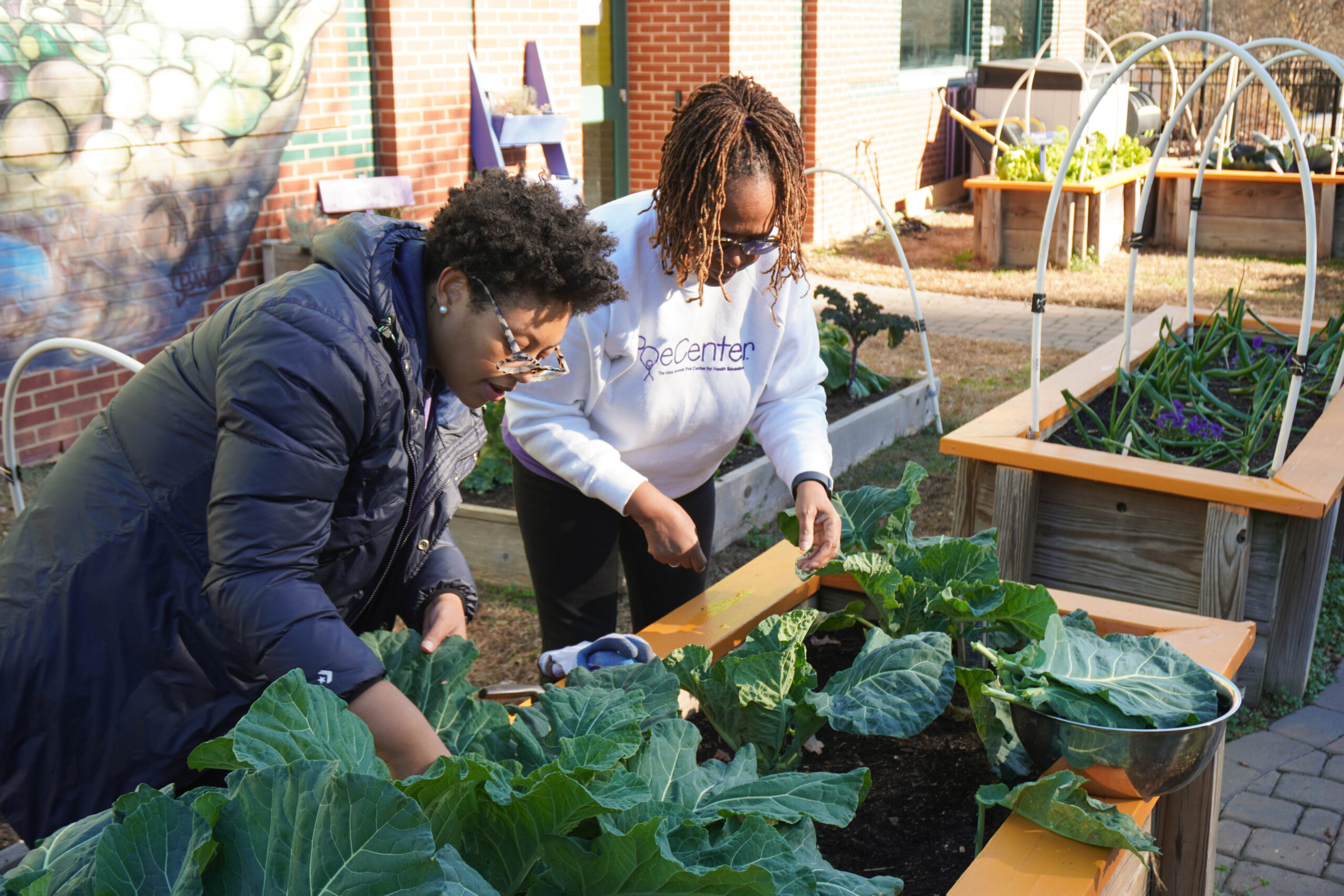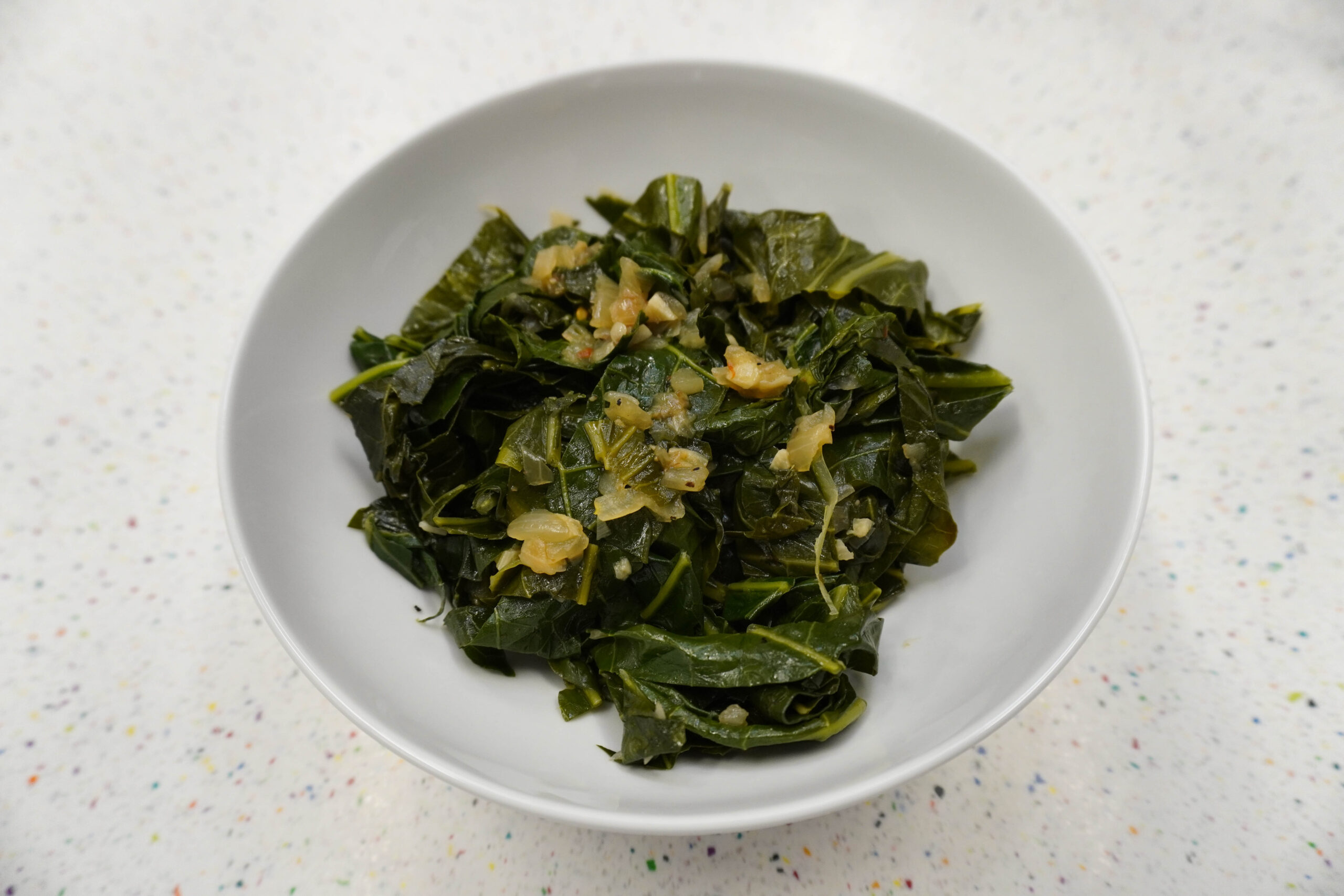
Collards: Not Just for New Year’s
Catherine Wills
Assistant Garden Specialist
Kim Major Walker
Health Educator
Collard greens are a staple of the traditional New Year’s meal. The dark green leaves of the collards represent the color of money. Consuming collard greens on New Year’s Day creates hope of wealth and prosperity in the coming year.
Collards have strong ties with the Southern African-American communities in the United States, dating back to the 1800’s. Collards were one of the few vegetables enslaved peoples were allowed to grow for their own families. After Emancipation, cooked collard greens became a comfort food for African Americans. Since then, collard greens have become a traditional food in African-American communities.
Learn more about the history of collards.
Join the Poe Center’s expert health educators as they harvest fresh collards from our garden, celebrate the history of collard greens, and make a New Year’s collard greens recipe.
Cooked Collard Greens
Though often eaten at the start of the new year, collard greens are consumed all year long. They can be eaten raw, sautéed, steamed, or slow cooked to yield soft tender leaves. The leaves can be used to create a nutritious wrap. Collards are full of magnesium, calcium, potassium, vitamins A, C , and K, and Folate. They are also a good source of fiber.
Ingredients
4 cups collard greens, stems removed, roughly chopped
2 Tablespoons olive oil or vegetable oil
1 medium white onion, diced
3 cloves garlic, minced
Salt and pepper to taste
2 to 3 teaspoons vinegar
Dash of red pepper flakes

Instructions
- Heat vegetable oil in a large pot over medium heat. Add garlic and onion. Sauté until fragrant, about three minutes.
- Add seasonings, broth, and chopped collard greens. Stir until combined with oil, broth, garlic, and onions.
- Place lid on pot and let simmer for about 30 minutes, stirring occasionally.
- Add two to three tablespoons of vinegar and stir.
- Serve with additional red pepper flakes, a dash of hot sauce, or other seasonings of your choice.
Follow our Garden to Kitchen blog each month for great tips
and insights on growing and cooking edible plants:
Get this great content delivered directly to your inbox.
Subscribe to our monthly nutrition email newsletter.
